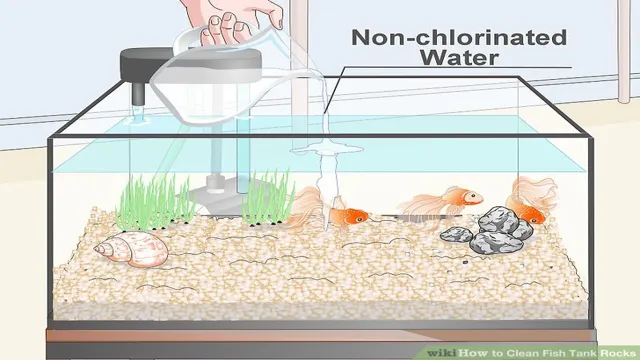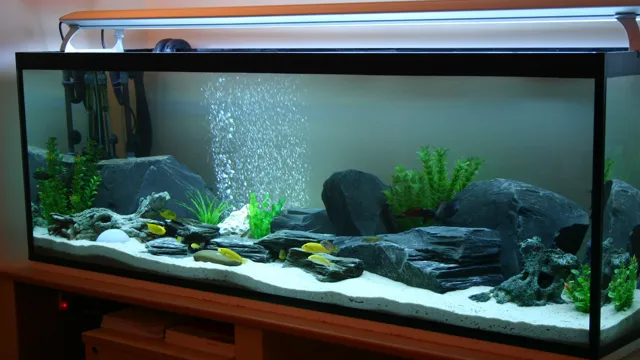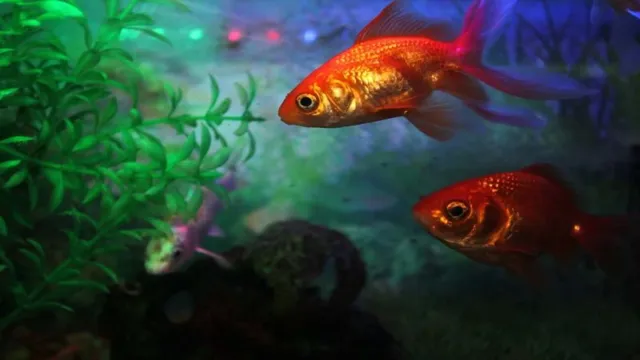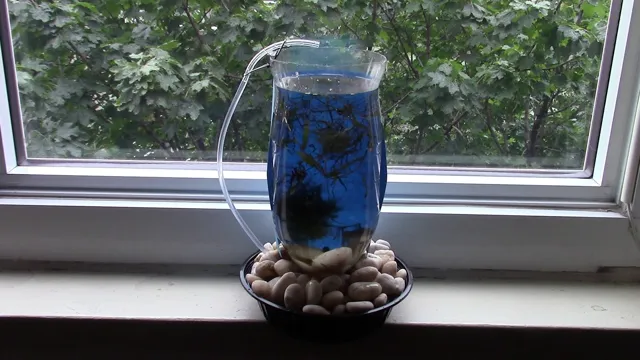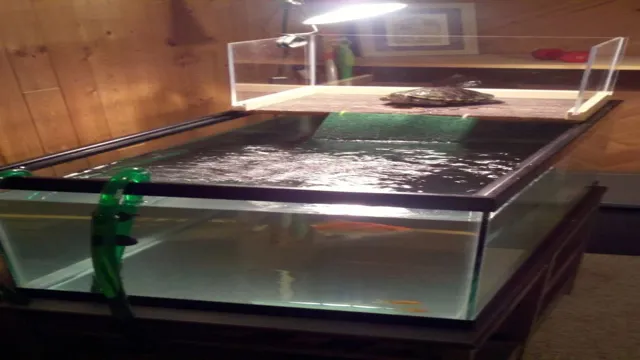As aquarium enthusiasts, we all strive to provide the best care for our finned friends. One aspect often overlooked is their diet; while commercial fish food can provide essential nutrients, adding live worms to their diet can provide a range of benefits. Not only do live worms provide a natural source of protein, but they also stimulate the fish’s hunting instincts and encourage them to exhibit their natural behavior.
But, how do you know which worms are safe for your fish to eat? How often should you feed them? Join us in this article as we explore the benefits and considerations of feeding live worms to your aquarium fish.
Introduction
If you’re looking to provide your aquarium fish with a nutritional boost, feeding them live worms can be a great option. However, you may be wondering how to go about doing so. First, make sure the worms you choose are appropriate for your fish species and size.
Then, feed only what your fish can eat in a few minutes, removing any uneaten worms to avoid fouling the water. You can also gut-load the worms with nutrient-rich foods before feeding them to your fish. Live worms can provide a valuable addition to your fish’s diet, just be sure to follow these tips for a safe and successful feeding.
What Are Live Worms?
Live worms, as the name suggests, are worms that are alive and wriggling! They come in all shapes and sizes, from tiny red wigglers to larger nightcrawlers. Live worms are commonly used as bait for fishing, but they also have several other uses. For example, they can be added to compost piles to help break down organic matter, or they can be used to feed captive reptiles and birds.
Some people even keep live worms as pets! Although they may not be the most glamorous creatures, live worms play an important role in the ecosystem and have many practical applications.
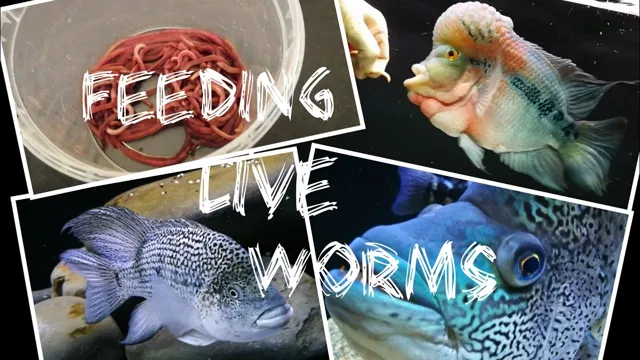
Why Feed Live Worms?
Live Worms for Feeding Feeding live worms to animals is a common practice, and for a good reason. Live worms are not only highly nutritious but also offer a range of vitamins and minerals that are beneficial to animals’ health. Many animals, such as birds, reptiles, and fish, thrive on live worms.
Unlike commercial food items that contain preservatives and artificial flavors, live worms are natural and free from any chemicals. They are also a great way to provide animals with the necessary protein and essential nutrients needed for proper development and growth. If you’re looking for a natural and healthy food source for your pets, live worms are an excellent option to consider.
Types of Live Worms for Fish Food
If you’re wondering how to feed live worms to your aquarium fish, there are several types of worms that you can offer them as a treat. One type of live worm that fish love is bloodworms, which are red in color and high in protein. Another popular type of worm is blackworms, which are long and slender and soft in texture.
Daphnia, a type of small crustacean, is another option that provides a healthy dose of nutrients for your fish. Finally, earthworms can also be a tasty, protein-rich meal for aquarium fish. Just make sure the worms you offer are disease-free and haven’t been exposed to harmful chemicals.
Feed your fish small quantities of worms at a time, and always remove any uneaten worms from the tank to prevent fouling the water. Overall, live worms can be a fun and nutritious addition to your fish’s diet, helping to keep them healthy and happy in their underwater world.
Bloodworms
When it comes to feeding your fish, you want to make sure they are getting the proper nutrition. One popular type of live worm used as fish food is bloodworms. These worms are actually the larvae of midge flies and are full of protein, making them a great source of nutrition for your fish.
In addition to bloodworms, other types of live worms that can be used as fish food include brine shrimp, tubifex worms, and blackworms. Each type of worm has its own unique nutritional benefits and can be used to provide a varied diet for your fish. By incorporating live worms into your fish’s diet, you can help ensure that they are getting the nutrients they need to stay healthy and thrive.
Blackworms
Blackworms are an excellent source of live food for fish in aquariums. Their size and nutritional value make them a popular choice for fish enthusiasts of all types. There are a few different types of live worms that are commonly used for fish food, and each has its own unique benefits. (See Also: How to Greatly Reduce the Need for Water Conditioner in Your Aquarium)
One of the most popular types of live worms for fish food is the blackworm. These small, thin worms are commonly found in freshwater environments and are translucent in coloring. Blackworms have a high protein content, which makes them an excellent food source for fish that require extra protein in their diet.
They are also easy to digest, which reduces the risk of overfeeding and associated health problems.
Grindal Worms
When it comes to feeding your fish, live worms can be a great source of protein and essential nutrients. Grindal worms are a popular choice among fish enthusiasts because they are easy to cultivate and can be used for a variety of fish species. These small, white worms are typically around 1-2mm long and have a soft texture that makes them easy for fish to digest.
Another popular type of live worm is bloodworms, which are high in protein and can help enhance the growth and health of your fish. However, it’s important to note that bloodworms can be expensive and may not be suitable for all types of fish. Ultimately, the type of live worm you choose will depend on your specific fish’s needs and preferences.
Regardless of which type of live worm you choose, incorporating them into your fish’s diet can help improve their overall health and vitality.
Tubifex Worms
When it comes to feeding fish live worms, tubifex worms are a popular option. These red, thin worms are usually feed to freshwater fish, and are high in protein. They are often sold live, frozen, or dried and can be purchased from fish stores or online.
But did you know that there are other types of live worms that can be fed to fish as well? Bloodworms, which are actually the larvae of the chironomid midge, are also a common choice. They are small, red in color, and can be purchased live, frozen, or in gel form. Another option is blackworms, which are thin and black and can sometimes be found in mud or debris at the bottom of ponds or creeks.
While all of these worms can provide great nutrition for fish, it’s important to remember to not overfeed and to provide a varied diet to ensure fish are getting all the nutrients they need.
How to Prepare Live Worms for Fish Food
If you’re looking to give your aquarium fish some extra protein and excitement in their diet, live worms could be a great option. However, it’s important to properly prepare them for feeding to ensure your fish stay healthy. First, make sure the worms are a suitable size for your fish, as you don’t want them to choke.
Next, rinse the worms thoroughly with clean water to remove any dirt or debris. If you want to make sure they’re parasite-free, you can soak them in a saltwater solution for several hours beforehand. Once ready to feed, simply drop a few worms into your aquarium and watch as your fish eagerly devour them.
It’s important not to overfeed, as excess food can lead to water quality issues. With the right preparation and moderation, live worms can be a fun and nutritious addition to your fish’s diet.
Cleaning the Worms
If you’re an avid angler, you know just how valuable live worms can be as bait. But before you toss them in the water, you’ll want to make sure they are properly cleaned. Cleaning the worms is crucial for their health and for the health of the fish you plan to catch. (See Also: How to Keep Aquarium Exterior Clean: Tips and Tricks for a Sparkling Tank)
The first step is to rinse the worms thoroughly in cool, clean water. Next, fill a bowl with damp newspaper and place the worms on top. Leave them for a few hours, and the worms will begin to purge any dirt or debris in their system.
Finally, rinse them off once more before using as bait. By taking the time to clean your live worms, you’ll increase your chances of a successful fishing trip and ensure that the fish you catch are getting a healthy meal. So why not give it a try the next time you stock up on live worms for your fishing adventures?
Preparing the Worms for Feeding
Preparing live worms for fish food can be a bit of a challenge, but it’s an excellent way to provide protein-rich nutrition for your fish. The first step is to purchase live worms from a reputable seller. Once you have the worms, you’ll need to prepare them for feeding by rinsing them with cool, clean water.
This will remove any dirt or debris that may be on the surface of the worms. Next, you can gut-load the worms to provide them with additional nutrients before feeding them to your fish. You can do this by placing the worms in a container filled with moistened cat food or fish flakes.
Let the worms feed for about 24 hours before offering them to your fish. Finally, you’re ready to feed the worms to your fish. You can place the worms directly into the aquarium or use a feeding dish to prevent the worms from escaping into the aquarium substrate.
Overall, preparing live worms for fish food can take a bit of effort, but it’s worth it to provide your fish with a nutrient-rich diet.
Feeding Live Worms to Your Fish
If you’re looking to provide your aquarium fish with a nutritious and exciting meal, live worms are a great option. However, it’s important to make sure you’re feeding your fish the right type of worm and in the proper way. One of the best types of worms to feed your fish are bloodworms – small, red worms that are high in protein and essential amino acids.
You can purchase them frozen or live at many pet stores. To feed live worms, you can simply drop them into your aquarium and watch as your fish gobble them up. Alternatively, you can use a worm feeder – a small container that can be suction-cupped to the side of your aquarium.
Just be sure not to overfeed your fish – worms should make up no more than 10% of their diet. With the right care and a little bit of patience, live worms can be a fun and healthy addition to your fish’s diet.
Frequency of Feeding
When it comes to feeding live worms to your fish, it’s important to consider the frequency of feeding. While live worms can be a nutritious and tasty treat for your aquatic pets, overfeeding them can be detrimental to their health. In general, it’s recommended to feed live worms to your fish once or twice a week, as a supplement to their regular diet.
This will help prevent overfeeding and ensure that your fish receive a balanced diet. Of course, the amount of live worms you feed your fish will depend on their size and species, so it’s important to do your research and consult with a veterinarian or fish expert if you’re unsure. Remember, just like humans, fish need a balanced diet to stay healthy and happy!
How Much to Feed?
When feeding live worms to your fish, it’s important to consider how much to give them. While live worms are a great source of protein, overfeeding can lead to health issues and even death for your fish. A good rule of thumb is to feed them only what they can eat in five minutes.
Start small and gradually increase the amount over time, taking note of how much your fish are consuming during each feeding. Keep in mind that different species of fish have different dietary needs, so it’s always best to research and consult with a professional if you’re unsure. It’s also important to maintain a balanced diet for your fish, incorporating other types of food such as pellets or flakes that contain essential nutrients and vitamins. (See Also: How to Program Koval Aquarium Light Dimmer Timer: Step-by-Step Guide)
Remember to also provide clean water for your fish to ensure their overall health and well-being. In summary, feeding live worms to your fish can be a great supplemental food source, but it’s important to regulate the amount given to avoid overfeeding. Keep a balanced diet in mind and consult with a professional if needed to ensure your fish are getting the necessary nutrients to thrive.
Conclusion
In conclusion, feeding live worms to your aquarium fish is a nutritious and entertaining way to keep your aquatic friends happy and healthy. Just be sure to properly clean and prepare the worms, and watch with awe (and maybe a little bit of disgust) as your fish eagerly chow down on their wriggly treats. Remember, a well-fed fish is a happy fish, so go ahead and let your inner worm wrangler shine!”
FAQs
What kind of live worms are safe to feed to aquarium fish?
The safest live worms to feed to aquarium fish are bloodworms, blackworms, and tubifex worms.
Can feeding live worms harm my aquarium fish?
As long as the live worms are safe for your specific type of aquarium fish and they are fed in moderation, they should not cause harm.
How do I prepare live worms for feeding my aquarium fish?
Rinse the live worms in fresh water before feeding them to your aquarium fish to remove any dirt or debris. You can also soak the worms in a vitamin supplement solution to increase their nutrition content.
How often should I feed live worms to my aquarium fish?
This will vary depending on the specific type of fish you have and their dietary needs, but in general, feeding live worms once or twice a week is sufficient.
Can I breed my own live worms for my aquarium fish?
Yes, there are many species of worms that can be easily bred at home, such as white worms or microworms. However, it is important to research proper breeding techniques and hygiene to ensure the worms are safe and healthy for your aquarium fish to eat.
What are some alternative ways to feed live worms to my aquarium fish?
You can also try freeze-dried or canned live worms if you are not comfortable using live ones. Another option is to mix the live worms with a gel food or blend them into a homemade fish food recipe.
Can feeding live worms improve the health and coloration of my aquarium fish?
Yes, live worms are a great source of protein and other essential nutrients that can promote the overall health and coloration of your aquarium fish.


